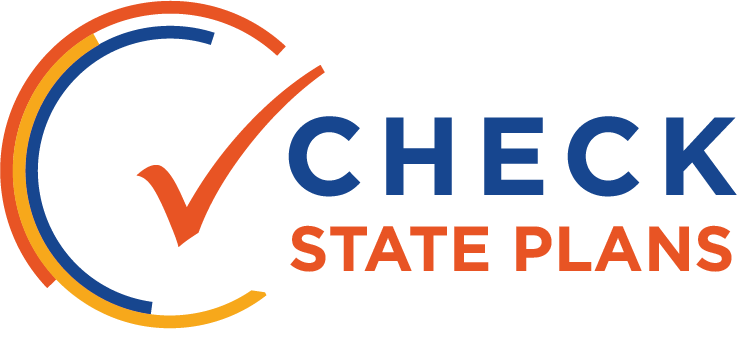
CONNECTICUT
- Overview of Connecticut's Plan
- Equity
- Strengths
- Improvements
- Coherent and Aligned Vision for Improving Outcomes
- Strategic Use of Funding and Alignment of Resources
- Rigorous Review Process
- Continuous Improvement, Monitoring and Evaluation
- Evidence-Based Interventions
- Capacity Building and Autonomy
- Engagement
- Sustainability
Promise to Practice Overview
Equity
Connecticut uses a solid approach to addressing resource inequity, though additional guiding questions and materials.
Strengths
Connecticut has a strong school improvement framework—aligning the needs assessment, resource inequities and root cause analysis process with strategies and interventions based on the needs assessment.
Improvements
Connecticut leans heavily on district capacity for implementing its plan for improvement. There also was some confusion around expectations related to the school improvement funding streams and funding formulas. The state could also benefit from featuring its theory of action more prominently in school improvement materials.
Coherent and Aligned Vision for Improving Outcomes:
Strategic Use of Funding and Alignment of Resources:
Rigorous Review Process:
Continuous Improvement, Monitoring and Evaluation:
Evidence-Based Interventions:
Capacity Building and Autonomy:
Engagement:
Sustainability:
Click through the tabs on the left to see how Connecticut scored in each category.
Equity
How well does the state’s approach to school improvement include focused attention on supporting underserved students and closing the achievement gap? Does the state require LEAs to maintain an equity focus in their school improvement plans, activities and resource allocations?
Connecticut uses a solid approach to resource inequity and root cause analysis in their application, though guiding questions related to equity could be more robust, especially in the needs assessment process. Additional materials and explanation regarding what state means by “equity” would benefit districts and schools.
Some language in the school improvement application and rubric implies the need to address equity issues. This is strongest in the allocation of resources portion of the application and in the priority setting for interventions and strategies for improvement.
Strengths
How is the state thoughtfully leveraging ESSA’s flexibility to put in place the necessary policies and procedures that create an enabling environment for effective and sustained school improvement, and that consider state/local lessons learned from past efforts? What parts of the state’s turnaround strategy or guidance to LEAs were strongest or exemplary?
Connecticut’s school improvement framework, the connection between the needs assessment, resource inequities, and root cause analysis process, and the alignment with the identified strategies and interventions to the results of the needs assessment are all strong. The scoring rubric itself is also high quality. Acknowledging the importance of the district role as a change agent is also commendable. The evidence guides are also a great resource; one which many other states do not yet offer their districts and schools.
Improvements
How can the state improve its turnaround efforts? What parts of the state’s strategy or guidance to LEAs were unclear? What risks and challenges might the state face with its current approach?
Initial review indicated that Connecticut is leaning heavily on district capacity and presuming that local staff will being able to do the needs assessments, the equity and root cause analysis, and develop solid plans for improvement. Feedback from the state has indicated that it is engaging in more technical support, guidance, and resource development to support districts with the needs assessment and school improvement application. The area of largest confusion continues to be the cohesion and consistency of expectations across the state’s multiple school improvement funding streams, cohorts of districts and schools, and competitive versus formula funding
The state has developed a theory of action for school improvement, but it is buried and unlabeled its ESSA plan. Connecticut should consider featuring its theory of action more prominently in its school improvement materials.
Coherent and Aligned Vision for Improving Outcomes
How well does the state articulate a coherent vision or theory of action that drives their school improvement efforts? Is this vision aligned with the state’s accountability system and goals for closing the achievement gap?

Connecticut has a clear and simple vision for school improvement, and the state’s framework includes four logical components: Culture and Climate, Academics, Operations, and Talent. The vision and framework’s permeation throughout Connecticut’s school improvement documents and tools seems inconsistent, however, and it is unclear how exactly the state will provide the supports to districts in order to implement them with fidelity. Districts are asked to rely upon it for the needs assessment, but not for interventions. The state indicates that districts need not select strategies and evidence-based interventions in each of the four Framework elements, which gave some reviewers pause, but the state explained that it would be unreasonable to ask districts and schools to focus on everything at once, which is a rational approach.
Equity and excellence are clearly stated in the vision, but it is difficult to evaluate the overall alignment with the rest of the system without more detail on how this work actually occurs or equity-related elements in Connecticut’s school improvement materials. The goals, including closure of achievement gaps, are not clearly articulated and must be assumed.
Strategic Use of Funding and Alignment of Resources
Is the state allocating funding in a way that is strategic and maximizes resources? Are LEAs expected to prioritize improvement efforts that address the underlying performance issues?

Connecticut seems to have a well-defined, differentiated system of identifying schools and districts, and the annual review of resource allocations is also strong. The state allocates 70% of its school improvement grants through a formula based on concentration of improvement schools in its Alliance districts, and the remaining 30% is allocated on a competitive basis to Commissioner’s Network districts. Initially, it appeared that Connecticut would be awarding new school improvement funds to a very small subset of schools that were not already receiving funds through the state’s prior school improvement grant program. While the state has clarified that its 33 Alliance districts are in fact receiving new school improvement funds, the fact remains that current publicly available materials do not address the lion’s share of federal funds going out to districts.
Connecticut’s materials indicate that the state does not allow schools in Alliance districts that are already receiving school improvement grants or state funds through its Commissioner’s Network to receive new money through this process. The state has indicated that it has changed its approach here, however, and will award additional school improvement funds to schools still receiving a school improvement grant.
Connecticut’s school improvement application is high quality, but it is unclear how funding is tied to efforts that address needs districts and schools have identified. Feedback from the state indicates that this is due to the fact that most of the school improvement guidance and coaching is occurring on the ground through technical assistance provided by the department of education. While it is unclear how the state’s various initiatives work together, allocating at least some of the available resources competitively will help to ensure district willingness and capacity to implement school improvement interventions.
Rigorous Review Process
Is the state applying rigorous criteria and review processes to ensure resources will be used to support effective school improvement efforts? Is the state prioritizing funding to LEAs who demonstrate the greatest need for school improvement funding (including LEAs with a high percentage of CSI and TSI schools) and the strongest commitment to school improvement?

Connecticut’s application review materials appear to be high quality. The state’s accountability plan describes a thorough peer review process and cut score for successful school improvement grant applications. However, this process isn’t referenced in the school improvement application or rubric. In the rubric, the only reference is to the number of points available, but not to a minimum number of points required for funding. Therefore, the threshold at which the state will fund applications is unclear, leading to concerns about the degree to which the state will implement the competitive funding process with fidelity. In addition, the points are tied to completeness as much as quality, indicating that a district may receiving funding for a complete plan, but not necessarily to a high quality plan. That said, feedback from the state indicates that the state has been willing to ask for significant plan revisions if chosen strategies are not adequately tied to needs identified in the district needs assessment.
It is also unclear what the review process is for the schools that are part of the competitive school improvement grant versus Alliance districts, in part because an application for Alliance districts is not publicly available. While the state has indicated that it will use different applications for the two school improvement programs it is unknown whether they are evaluated the same way, how expectations compare, or how the fidelity of implementation is assessed.
Continuous Improvement, Monitoring and Evaluation
Does the state have a robust, data-driven process to monitor LEAs’ implementation of the school improvement plans within their district? Did the state establish clear milestones to ensure improvement over time, and within four years?

If Connecticut implements the proposed monitoring plan in its ESSA application, it is promising for the schools and districts that are part of the Opportunity and Alliance Districts. Yet, Connecticut has provided inconsistent language between the state’s ESSA plan and school improvement application with respect to monitoring, evaluation and milestones. The ESSA plan describes a robust system with multiple site visits within a year and expected milestones. The application speaks to an annual review, yet describes that the stay “may” require changes if there isn’t progress. That said, the state has indicated that it has and will ask for significant revisions to district plans based on performance. The application rubric identifies various indicators that schools must use to demonstrate readiness, but they do not appear to be aligned with the state’s school improvement framework that focuses on Culture and Climate, Academic, Operations, and Talent.
The state’s intention of implementing a cross-department team to monitor progress, which includes education agency representatives from academics, assessment, performance, turnaround, and federal programs, is commendable and should result in more cohesive supports for the schools and districts. The state describes a robust process through which districts submit data aligned with their plan, the state reviews the data internally and both the state and district suggest agenda items for a check in with the district, and then the state and district come together to discuss progress and next steps. This cycle occurs three times annually, in addition to regular consultant-provided technical assistance for Alliance districts. Districts that apply for the state’s competitive improvement funds will also receive some direct assistance, but less frequently. Ensuring that additional information on the details of this cycle are publicly available to district, school, and community stakeholders would strengthen the state’s approach by increasing the transparency of expectations.
More detail on the expected milestones for all identified schools and districts would be useful. Connecticut has indicated that all school districts will be expected to set milestones that are aligned to the state’s ESSA goals and accountability indicators, though evidence of that process is not available.
Evidence-Based Interventions
To what extent is the state mandating LEAs use evidence-based strategies in their improvement efforts? Does the state provide guidance and supports to LEAs to help them identify and implement the most effective strategies based upon their needs?

Connecticut has complied with ESSA regarding their expectations for evidence-based strategies and interventions. The evidence-based guidance documents, which include links to the research in key areas, are clear and easy to navigate.
The state’s school improvement application rubric requires the applicant to note the level of evidence for chosen interventions, but full points on this element seem like an accounting exercise. The state provides the information and expects the district to make the connections between school needs and effective strategies, though state feedback indicates it is willing to offer support if the district struggles. Additional support in how to connect local needs to the strategies and interventions, such as including some guiding questions to help determine if an evidence-based intervention is appropriate for a school’s demographic, would be useful on the front end.
Capacity Building and Autonomy
How well does the state articulate, delineate or set parameters around which interventions and responsibilities belong to the state, LEA and/or school? Does the state provide support or guidance to help LEAs identify and reduce barriers to school improvement? Does the state have a framework or process to support and monitor outside entities who partner with the state, LEAs or schools in school improvement efforts?

Based on the materials available, it appears that Connecticut has provided sufficient information regarding roles and lines of authority. The state clearly articulates each district as the change agent and supports are designed around this belief. Each district is required to explain, in detail, how it is supporting schools in the development of school improvement plans. Connecticut could more clearly describe the types of changes that might be needed to ensure that each domain of the school improvement framework is implemented with fidelity.
There does not seem to be much support or guidance related to reducing barriers to improvement, nor a process or framework from the state to help district screen outside partners. That said, outside providers are expected to provide evidence that their interventions meet ESSA’s evidence-based tiers. The state’s rubric requires each district to explain how it is vetting partners using evidence of effectiveness, but information related to how to vet the effectiveness of external providers was not evident in the materials available for review. In addition to Connecticut’s comprehensive support schools completing needs assessments, the state also requires needs assessments from its targeted support schools. This is certainly a promising practice and supports the idea that all identified schools should utilize the same continuous improvement cycle, and may result in more districts and schools feeling prepared to make decisions about evidence-based interventions.
Engagement
Does the state require LEAs to engage with stakeholders such as parents and community members in the development and implementation of their school improvement plans? Does the state provide sufficient guidance and resources to LEAs to effectively do so, helping them foster local buy-in and promote sustainability?

Stakeholder engagement is a component of the state’s school turnaround framework under Culture and Climate. It is also included as a component of the school improvement application and rubric, however it isn’t given much weight. Considerations around engagement also seem to be limited to developing the plan, not implementing or monitoring it. Connecticut could improve by including engagement supports throughout the school improvement work, especially since engagement is embedded within one of the three pillars of Connecticut’s school improvement framework.
On the other hand, Connecticut state statute requires that low performing schools have a school governance council that includes diverse membership, including parents and community members. The state has also developed and made available an evidence guide for stakeholder engagement. It’s a well-resourced and well-organized guide. Unfortunately, this guide does not seem tied to the school improvement application.
Engagement
Does the state have a plan in place to review the school improvement efforts statewide and evaluate the impact and effectiveness? Does the state have a process in place to support LEAs and schools by enhancing their capacity to maintain their improvement efforts upon exiting identification and intervention?

Sustainability is an element of Connecticut’s school improvement application and rubric, and the state does plan to perform annual reviews of school improvement efforts statewide. The has also indicated that it prompts districts to start thinking about sustaining improvement efforts when they check in roughly half way through the grant cycle.
Districts may need additional support to understand what those autonomies may look like in practice, and how schools and districts will continue to maintain improvements without additional funds or support is unclear.
- Overview of Connecticut's Plan
- Goals
- Standards and Assessments
- Indicators
- Academic Progress
- All Students
- Identifying Schools
- Supporting Schools
- Exiting Improvement Status
- Continuous Improvement
 Overview
Overview
Strengths
- Connecticut deserves credit for including a robust list of measures in its accountability systems, including art, physical education, science, and college-going rates. Although the details around implementation matter.
- Connecticut significantly involved stakeholders in its planning process, which began prior to passage of ESSA. Through site visits, surveys, and focus groups, there was a substantial effort to engage practitioners, parents, and the public (although it remains unclear if all stakeholder groups were represented equitably).
- Connecticut has used the State Board of Education’s five-year comprehensive plan and its Next Generation Accountability System as a foundation to its ESSA plan. Although it hasn’t fully succeeded in aligning its proposed accountability system with its professed long-term vision, Connecticut could take specific steps to strengthen the cohesiveness of its efforts.
Weaknesses
- Connecticut’s plan does not include proficiency targets, and its accountability system does not include any measure capturing whether or not students are reaching the state’s grade-level standards.
- Under the state’s proposed accountability system, schools will be competing against each other for their place in the rankings, rather than against a predetermined standard. That lack of front-end transparency will present a challenge for educators, who won’t have clear goals to shoot for at the beginning of each school year. The state’s exit criteria also allow low-performing schools to leave improvement status only once they jump enough schools in the state’s rankings.
- The state’s plan also has a number of potentially negative implications for subgroups of students. The state’s uses of a “high-needs” group, which would combine low-income students, English language learners, and students with disabilities. Although the high-needs group will count for 40 percent of a school’s score, that may not work well from an educational standpoint, because these three groups have very different needs. And, by focusing exclusively on this group, Connecticut would be ignoring the performance of other groups, like black and Hispanic students.
Click through the tabs on the left to see how Connecticut scored in each category.
GOALS
Connecticut has outlined the goal of 100 percent of its students reaching their individual growth targets by 2030.
The state uses a growth model that asks lower-performing students to make faster progress, and student-level targets are based on historical data for what students at different performance levels have achieved in the past.
While these goals may serve an important purpose in Connecticut, the state’s plan lacks targets for students meeting grade-level standards. ESSA allows states to use academic growth in their accountability system, but it specifically requires states to set achievement goals.
The state mentions an academic performance target in the accountability system section, but without data on past student performance by subgroup and established targets by subgroup, it is impossible to know whether this target is ambitious or aligned to any objective measure. The absence of a proficiency goal and targets is also inconsistent with the State Board of Education’s five-year comprehensive plan, which states that “every student is expected to meet high standards.”
Connecticut also does not yet have an English language proficiency goal.
The state explains that it is waiting to set its final goal until it has additional data, and it plans to use a methodology similar to how it measures growth in English and math.
Connecticut has proposed setting its graduation rate goal at 94 percent for all students, which it aims to reach by 2029.
The plan does not explain how the state chose its 94 percent target, but the goal itself will mean very different things for different groups of students. Although subgroups of students such as English-language learners would have to make steep progress to meet the state’s goal, the state is not asking for any gains in the graduation rates of Asian-American students, which are actually allowed to decline by almost 1 percentage point.
STANDARDS AND ASSESSMENTS

Connecticut is implementing high standards and administering a high-quality assessment.
Connecticut’s involvement in the Smarter Balanced Assessment Consortium exhibits its commitment to high-quality assessments that provide reliable, valid, and consistent data.
Connecticut’s plan lacks details around support for English language learners and students with disabilities.
Although it mentions designated supports for English language learners in the main state assessment, there is no mention of supports available for English-language learners who take the state’s alternate assessment. The state should also provide the steps it will take to ensure that it does not exceed the 1 percent cap on participation in the alternate assessments.
INDICATORS
Connecticut says it plans to incorporate 12 total indicators into its accountability system.
Elementary schools are held accountable for four measures: student proficiency (including English language arts, math, and science), growth, chronic absenteeism, and physical fitness. But not all measures apply to all schools.
Connecticut deserves credit for attempting to include a range of different measures.
Considering the limitations in statewide data collection of measures other than state-administered assessments, the indicators reflect an effort toward achieving a more comprehensive, holistic evaluation of school quality. For example, it has proposed ways to incorporate physical fitness and art into its accountability system. However, while the physical fitness measure appears to be grounded in an objective, statewide rating system, it may be inappropriate for many students with disabilities. And the state’s proposed arts access measure could allow schools to game the measure in unhelpful ways by labeling classes as “art” that might not be truly comparable, especially since the indicator is a measure of access, not success.
Connecticut deserves credit for incorporating college-going rates.
This will help bridge the gap between K-12 and higher education and encourage schools to pay attention to what happens to students after they graduate. The state could further strengthen this indicator over time by also incorporating college remediation rates, as well as career-ready metrics like industry certifications or employment rates.
Connecticut plans to combine English language proficiency and academic growth into a single indicator.
This could be problematic if it conceals student performance on English-language proficiency. The state has not yet provided the weights of each of these components within the overall total. Connecticut would have a stronger plan if it described the weight it planned to give English-language proficiency and if it was sufficient to matter in a school’s overall rating.
![]()
ACADEMIC PROGRESS
Connecticut’s accountability system incentivizes both academic achievement and growth over time.
Both indicators make up more than half of the summative rating. Connecticut has created a thoughtful growth model that evaluates the change in a student’s scale score from year to year against pre-established targets. While this method sets ambitious growth targets fixed to a pre-determined criteria, and it expects students at lower incoming performance levels to make faster growth, this model is not explicitly pegged to grade-level targets.
This may not be an issue except that Connecticut’s choice of an achievement index uses scale scores on a sliding basis, without any extra incentive for students to meet the state’s grade-level standards. That model would allow some students to compensate for others and may hide lower-performing students, and it means Connecticut has not embedded grade-level benchmarks into its proposed system in any way.
ALL STUDENTS
Connecticut’s plan has a number of potentially negative implications for subgroups of students.
The state will give its “high-needs” subgroup approximately 40 percent weight in each school’s rating, which is significant, but it omits other groups like black and Hispanic students. Connecticut sets a low threshold to include subgroups of students into its accountability system (an n-size of 20 students), but it does not provide data on the impact.
Connecticut proposes using its combined “high needs” group to identify schools in need of targeted support, which has a number of problems.
The group would be composed of students from a low socioeconomic background, English language learners, and students with disabilities. While the goal with this group is to capture more students in the accountability system, it’s not clear what sort of intervention a school would design based on this combined group, since each of the component groups has different instructional needs.
Moreover, given the relative size of each of these groups, English Learners and students with disabilities are likely to be drowned out by the much larger group of students from low socioeconomic backgrounds.
Connecticut’s plan is inconsistent with the ESSA requirement that states pay attention to all subgroups.
Connecticut’s proposal to limit its targeted support efforts to a subset of its student groups is inconsistent with federal requirements, and it would ignore other groups, such as black and Hispanic students.
The state is also proposing to include former English-language learners and students with disabilities for up to four or two years, respectively, after they are no longer receiving services. Since exiting students tend to have higher performance, the state should monitor its data to ensure it is not masking the performance of students who are still receiving services.
IDENTIFYING SCHOOLS
Connecticut plans to place schools into five categories based on their relative performance.
Connecticut’s plan separates schools by quartile and creates hard cut points around those quartiles. This means that schools may also move in and out of different categories simply because other schools jumped them in the rankings. The state proposes to lower a school’s category one level if its high-needs group is a “significant outlier,” but does not define what this means.
Connecticut’s plan to identify targeted support schools appears to violate federal requirements.
Connecticut must revisit its definition and ensure that a school with any low-performing subgroup be identified for targeted support.
Connecticut proposes to look at the six-year graduation rate.
The state would only look at that rate if schools failed to reach a 70 percent threshold in three consecutive years. ESSA sets the threshold at 67 percent, and the state would have a stronger plan that was more aligned to its long-term vision if it used its four-year graduation rate here.
Connecticut deserves credit for incorporating recognition for “schools of distinction.”
The criteria Connecticut is using to identify those schools are comprehensive, appropriate, and worthy of replication by other states. Most states are only focused on low-performing schools.
SUPPORTING SCHOOLS
Connecticut has articulated a coherent plan to tailor its improvement efforts to school districts.
The plan is particularly strong in the areas of talent management, academic growth and performance, English language proficiency, climate and culture, and organizational effectiveness. Connecticut should be commended for outlining the strategies it will employ for those schools that need rigorous interventions and the steps it will take to inform the parents of those schools.
The state department of education has structured its teams around tiered supports for districts, and it will offer evidence-based guides.
The state intends to award 70 percent of its school-improvement funds on a formula basis to districts with comprehensive support schools.
The remaining 30 percent would be allocated based on a competition that would reward districts with evidence-based interventions that are most closely aligned with the needs identified in those schools. If the state is requiring districts to apply for support, then Connecticut should clarify what those requirements for approval include. Connecticut should also ensure that school-improvement strategies specifically support the groups of students that were the basis for the school’s identification.
Connecticut’s plan is not clear on what schools will be required to do if they continue to be identified as in need of comprehensive support.
Connecticut’s plan articulates at least some specific actions, but they may not kick in for 10 years. And even then, they are not clearly defined as to what schools would actually be required to do.
Exiting Improvement Status
More details are needed on Connecticut’s plan for exiting schools from improvement status.
Connecticut states that comprehensive and targeted support schools will exit improvement status if they no longer meet the reason for their identification in the two consecutive years after identification and meet “Interim Progress Checkpoints.” It’s not clear what this approach will mean or if it’s sufficiently ambitious to ensure sustained improvements, particularly for the lowest-performing schools.
Moreover, since Connecticut is using a normative identification system where schools are compared with each other, an identified school could jump in the rankings if other schools regress, even without improving its own performance.
Continuous Improvement
Connecticut needs to share how the state will continue to assess its progress.
Connecticut articulates a few ways that schools and districts will continue to assess progress over time, but it does not specify actions the state plans to take. Throughout the plan Connecticut indicates that it will continue to engage stakeholders as it moves forward, but the details about the process and strategies used to engage parents of historically marginalized students are vague.
Connecticut should adopt meaningful consultation strategies to ensure it is adequately hearing from parents of color and parents of all educational backgrounds.
The state saw low participation rates of certain groups of parents/grandparents/guardians in surveys cited by the state. In data the state provides, 79.7 percent of the survey respondents were white, and more than 85 percent indicated they had completed a bachelor’s degree or higher. Both of those rates are far in excess of their representation in the state’s population as a whole.







